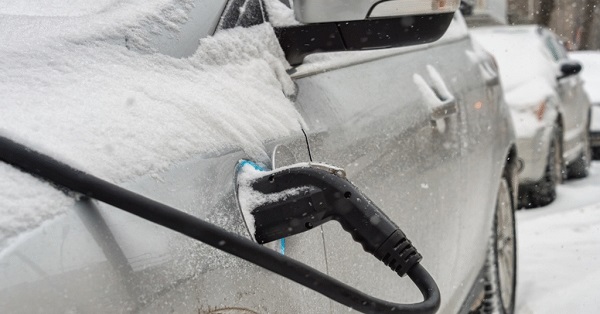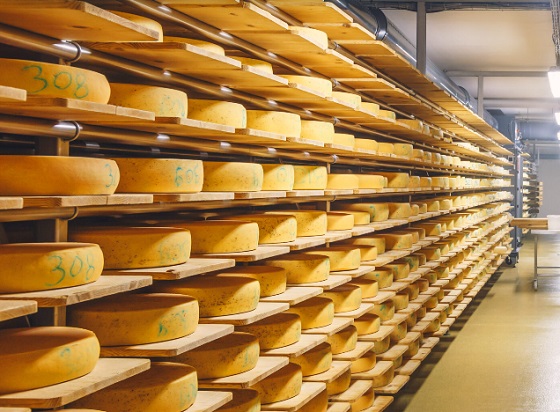Uncategorized
Indonesia offers to assist in Ethiopia crash investigation

BEIJING — China’s civilian aviation authority ordered all Chinese airlines to ground their Boeing 737 Max 8 planes indefinitely on Monday after one of the aircraft crashed in Ethiopia.
The Civil Aviation Administration of China said the order is to take effect by 6 p.m. (1000 GMT) Monday.
It said the order, issued Monday morning, was “taken in line with the management principle of zero tolerance for security risks,” because the crash was the second after another of the planes fell into the ocean off the coast of Indonesia in similar circumstances on Oct. 29, killing all aboard.
The head of Indonesia’s national transport safety agency, Soerjanto Thahjono, offered Monday to assist the Ethiopian investigation into Sunday’s crash.
Like the Ethiopian Airlines crash, which happened minutes after the jet’s takeoff from Addis Ababa and killed all 157 people on board, the Lion Air jet that crashed off Indonesia had erratic speed in the few minutes it was in the air.
The crash put global aviation authorities on alert.
Cayman Airways says it was temporarily grounding the two Boeing 737 Max 8 aircraft it operates, as of Monday.
The president and CEO of the Caribbean carrier, Fabian Whorms, acknowledged the cause of the Ethiopian crash was unclear, but said the airline was taking the step because of its “commitment to putting the safety of our passengers and crew first.”
China’s aviation authority said it would issue further notices after consulting with the U.S. Federal Aviation Administration and Boeing.
Eight Chinese nationals on board the Ethiopian Airlines flight that crashed.
The crash in Ethiopia has renewed safety questions about the newest version of Boeing’s popular 737 airliner, since the plane was new and the weather was clear at the time. The pilots tried to return to the airport but never made it.
But safety experts cautioned against quickly drawing too many parallels between the two crashes.
it is very early, and more will be known after investigators find and analyze the Ethiopian plane’s black boxes, said William Waldock, an aviation-safety professor at Embry-Riddle Aeronautical University.
But suspicion will be raised because the same type of plane appeared to crash the same way — a fatal nosedive that left wreckage in tiny pieces.
“Investigators are not big believers in coincidence,” he said.
Waldock said Boeing will look more closely at the flight-management system and automation on the Max.
Boeing representatives did not immediately respond for comment. The company tweeted that it was “deeply saddened to learn of the passing of the passengers and crew” on the Ethiopian Airlines Max airplane.
The Chicago-based company said it would send a technical team to the crash site to help Ethiopian and U.S. investigators.
The 737 is the
Boeing has delivered about 350 737 Max planes and has orders for more than 5,000. It is already in use by many airlines including American, United and Southwest.
Alan Diehl, a former National Transportation Safety Board investigator, said the similarities in the crashes included both crews encountering a problem shortly after takeoff, and reports of large variations in vertical speed during the Ethiopian jetliner’s ascent, “clearly suggesting a potential controllability problem.”
But there are many possible explanations, including engine problems, pilot error, weight load, sabotage or bird strikes, he said.
Ethiopian has a good reputation, but investigators will look into the plane’s maintenance, especially since that may have been an issue in the Lion Air crash.
Ethiopian Airlines’ CEO told reporters a maintenance check-up did not find any problems with the plane before Sunday’s flight, “so it is hard to see any parallels with the Lion Air crash yet,” said Harro Ranter, founder of the Aviation Safety Network, which compiles information about accidents worldwide.
“I do hope though that people will wait for the first results of the investigation instead of jumping to conclusions based on the very little facts that we know so far,” he said.
The NTSB said it was sending a team of four to assist Ethiopian authorities. Boeing and the U.S. investigative agency are also involved in the Lion Air probe.
Indonesian investigators have not stated a cause for that crash, but they are examining whether faulty readings from a sensor might have triggered an automatic nose-down command to the plane, which the Lion Air pilots fought unsuccessfully to overcome. The automated system kicks in if sensors indicate that a plane is about to lose lift, or go into an aerodynamic stall. Gaining speed by diving can prevent a stall.
The Lion Air plane’s flight data recorder showed problems with an airspeed indicator on four flights, although the airline initially said the problem was fixed.
The director general of Air Transportation in Indonesia, Polana B. Pramesti, said the agency has been following up on an FAA airworthiness directive and is still evaluating the 737 Max 8 following the crash.
Days after the Oct. 29 accident, Boeing sent a notice to airlines that faulty information from a sensor could cause the plane to automatically point the nose down. The notice reminded pilots of the procedure for handling such a situation, which is to disable the system causing the automatic nose-down movements.
Boeing Chairman and CEO Dennis Muilenburg said in December that the Max is a safe plane, and that Boeing did not withhold operating details from airlines and pilots.
Pilots at some airlines, however, including American and Southwest, have protested that they were not fully informed about the new system.
The Lion Air incident appears not to have harmed Boeing’s ability to sell the Max. Boeing’s stock fell nearly 7
___
AP Business Writer Stephen Wright in Jakarta, Indonesia, and AP Airlines Writer David Koenig in Dallas, Texas, contributed to this story. Koenig can be reached at http://twitter.com/airlinewriter
Christopher Bodeen, The Associated Press
Uncategorized
Mortgaging Canada’s energy future — the hidden costs of the Carney-Smith pipeline deal


Much of the commentary on the Carney-Smith pipeline Memorandum of Understanding (MOU) has focused on the question of whether or not the proposed pipeline will ever get built.
That’s an important topic, and one that deserves to be examined — whether, as John Robson, of the indispensable Climate Discussion Nexus, predicted, “opposition from the government of British Columbia and aboriginal groups, and the skittishness of the oil industry about investing in a major project in Canada, will kill [the pipeline] dead.”
But I’m going to ask a different question: Would it even be worth building this pipeline on the terms Ottawa is forcing on Alberta? If you squint, the MOU might look like a victory on paper. Ottawa suspends the oil and gas emissions cap, proposes an exemption from the West Coast tanker ban, and lays the groundwork for the construction of one (though only one) million barrels per day pipeline to tidewater.
But in return, Alberta must agree to jack its industrial carbon tax up from $95 to $130 per tonne at a minimum, while committing to tens of billions in carbon capture, utilization, and storage (CCUS) spending, including the $16.5 billion Pathways Alliance megaproject.
Here’s the part none of the project’s boosters seem to want to mention: those concessions will make the production of Canadian hydrocarbon energy significantly more expensive.
As economist Jack Mintz has explained, the industrial carbon tax hike alone adds more than $5 USD per barrel of Canadian crude to marginal production costs — the costs that matter when companies decide whether to invest in new production. Layer on the CCUS requirements and you get another $1.20–$3 per barrel for mining projects and $3.60–$4.80 for steam-assisted operations.
While roughly 62% of the capital cost of carbon capture is to be covered by taxpayers — another problem with the agreement, I might add — the remainder is covered by the industry, and thus, eventually, consumers.
Total damage: somewhere between $6.40 and $10 US per barrel. Perhaps more.
“Ultimately,” the Fraser Institute explains, “this will widen the competitiveness gap between Alberta and many other jurisdictions, such as the United States,” that don’t hamstring their energy producers in this way. Producers in Texas and Oklahoma, not to mention Saudi Arabia, Venezuela, or Russia, aren’t paying a dime in equivalent carbon taxes or mandatory CCUS bills. They’re not so masochistic.
American refiners won’t pay a “low-carbon premium” for Canadian crude. They’ll just buy cheaper oil or ramp up their own production.
In short, a shiny new pipe is worthless if the extra cost makes barrels of our oil so expensive that no one will want them.
And that doesn’t even touch on the problem for the domestic market, where the higher production cost will be passed onto Canadian consumers in the form of higher gas and diesel prices, home heating costs, and an elevated cost of everyday goods, like groceries.
Either way, Canadians lose.
So, concludes Mintz, “The big problem for a new oil pipeline isn’t getting BC or First Nation acceptance. Rather, it’s smothering the industry’s competitiveness by layering on carbon pricing and decarbonization costs that most competing countries don’t charge.” Meanwhile, lurking underneath this whole discussion is the MOU’s ultimate Achilles’ heel: net-zero.
The MOU proudly declares that “Canada and Alberta remain committed to achieving Net-Zero greenhouse gas emissions by 2050.” As Vaclav Smil documented in a recent study of Net-Zero, global fossil-fuel use has risen 55% since the 1997 Kyoto agreement, despite trillions spent on subsidies and regulations. Fossil fuels still supply 82% of the world’s energy.
With these numbers in mind, the idea that Canada can unilaterally decarbonize its largest export industry in 25 years is delusional.
This deal doesn’t secure Canada’s energy future. It mortgages it. We are trading market access for self-inflicted costs that will shrink production, scare off capital, and cut into the profitability of any potential pipeline. Affordable energy, good jobs, and national prosperity shouldn’t require surrendering to net-zero fantasy.If Ottawa were serious about making Canada an energy superpower, it would scrap the anti-resource laws outright, kill the carbon taxes, and let our world-class oil and gas compete on merit. Instead, we’ve been handed a backroom MOU which, for the cost of one pipeline — if that! — guarantees higher costs today and smothers the industry that is the backbone of the Canadian economy.
This MOU isn’t salvation. It’s a prescription for Canadian decline.
Uncategorized
Cost of bureaucracy balloons 80 per cent in 10 years: Public Accounts

The cost of the bureaucracy increased by $6 billion last year, according to newly released numbers in Public Accounts disclosures. The Canadian Taxpayers Federation is calling on Prime Minister Mark Carney to immediately shrink the bureaucracy.
“The Public Accounts show the cost of the federal bureaucracy is out of control,” said Franco Terrazzano, CTF Federal Director. “Tinkering around the edges won’t cut it, Carney needs to take urgent action to shrink the bloated federal bureaucracy.”
The federal bureaucracy cost taxpayers $71.4 billion in 2024-25, according to the Public Accounts. The cost of the federal bureaucracy increased by $6 billion, or more than nine per cent, over the last year.
The federal bureaucracy cost taxpayers $39.6 billion in 2015-16, according to the Public Accounts. That means the cost of the federal bureaucracy increased 80 per cent over the last 10 years. The government added 99,000 extra bureaucrats between 2015-16 and 2024-25.
Half of Canadians say federal services have gotten worse since 2016, despite the massive increase in the federal bureaucracy, according to a Leger poll.
Not only has the size of the bureaucracy increased, the cost of consultants, contractors and outsourcing has increased as well. The government spent $23.1 billion on “professional and special services” last year, according to the Public Accounts. That’s an 11 per cent increase over the previous year. The government’s spending on professional and special services more than doubled since 2015-16.
“Taxpayers should not be paying way more for in-house government bureaucrats and way more for outside help,” Terrazzano said. “Mere promises to find minor savings in the federal bureaucracy won’t fix Canada’s finances.
“Taxpayers need Carney to take urgent action and significantly cut the number of bureaucrats now.”
Table: Cost of bureaucracy and professional and special services, Public Accounts
| Year | Bureaucracy | Professional and special services |
|
$71,369,677,000 |
$23,145,218,000 |
|
|
$65,326,643,000 |
$20,771,477,000 |
|
|
$56,467,851,000 |
$18,591,373,000 |
|
|
$60,676,243,000 |
$17,511,078,000 |
|
|
$52,984,272,000 |
$14,720,455,000 |
|
|
$46,349,166,000 |
$13,334,341,000 |
|
|
$46,131,628,000 |
$12,940,395,000 |
|
|
$45,262,821,000 |
$12,950,619,000 |
|
|
$38,909,594,000 |
$11,910,257,000 |
|
|
$39,616,656,000 |
$11,082,974,000 |
-

 Business1 day ago
Business1 day ago“Magnitude cannot be overstated”: Minnesota aid scam may reach $9 billion
-

 Censorship Industrial Complex1 day ago
Censorship Industrial Complex1 day agoUS Under Secretary of State Slams UK and EU Over Online Speech Regulation, Announces Release of Files on Past Censorship Efforts
-

 Haultain Research2 hours ago
Haultain Research2 hours agoSweden Fixed What Canada Won’t Even Name
-

 Business1 day ago
Business1 day agoLargest fraud in US history? Independent Journalist visits numerous daycare centres with no children, revealing massive scam
-

 Business2 days ago
Business2 days agoSocialism vs. Capitalism
-

 Energy2 days ago
Energy2 days agoCanada’s debate on energy levelled up in 2025
-

 Daily Caller2 days ago
Daily Caller2 days agoIs Ukraine Peace Deal Doomed Before Zelenskyy And Trump Even Meet At Mar-A-Lago?
-

 Business2 hours ago
Business2 hours agoWhat Do Loyalty Rewards Programs Cost Us?








